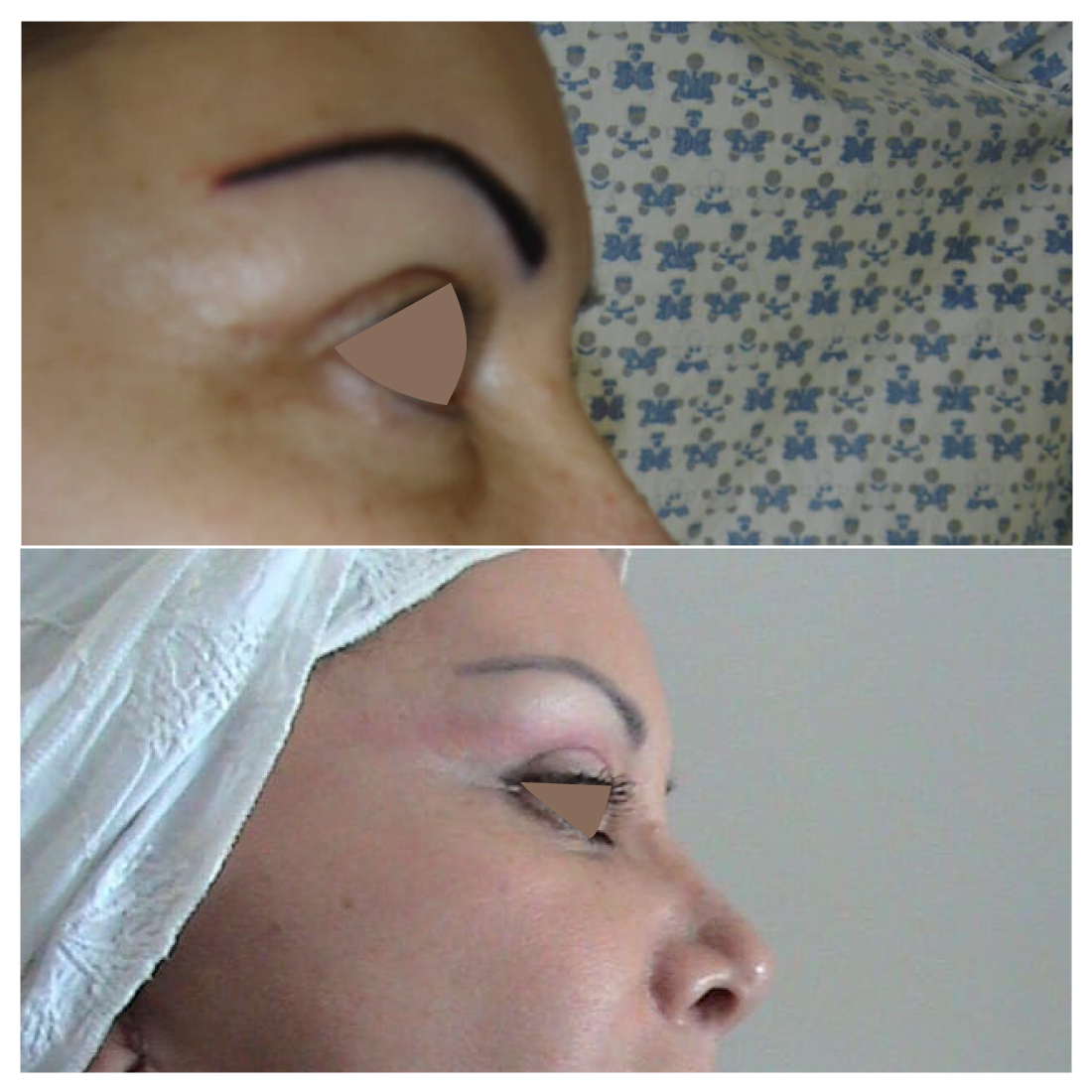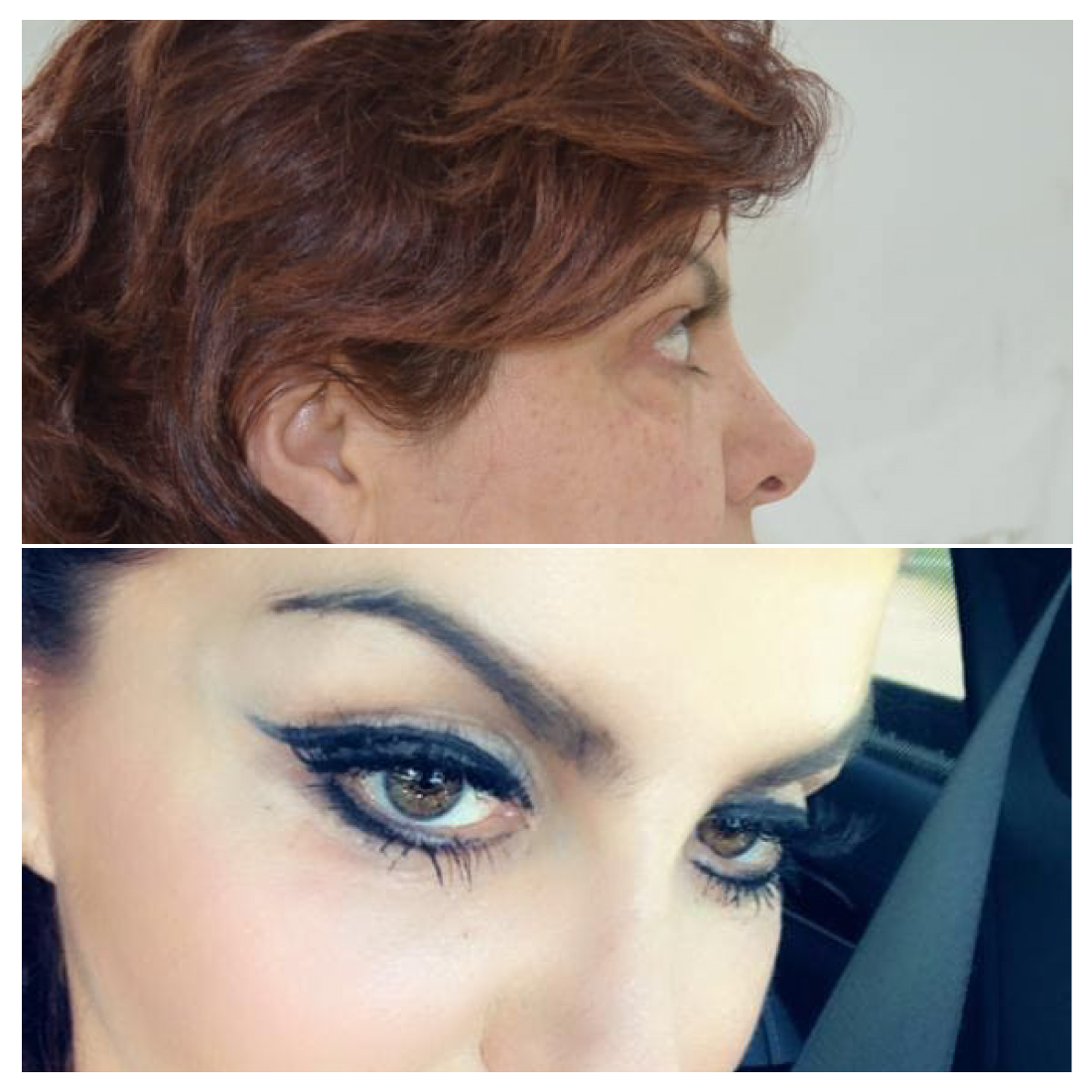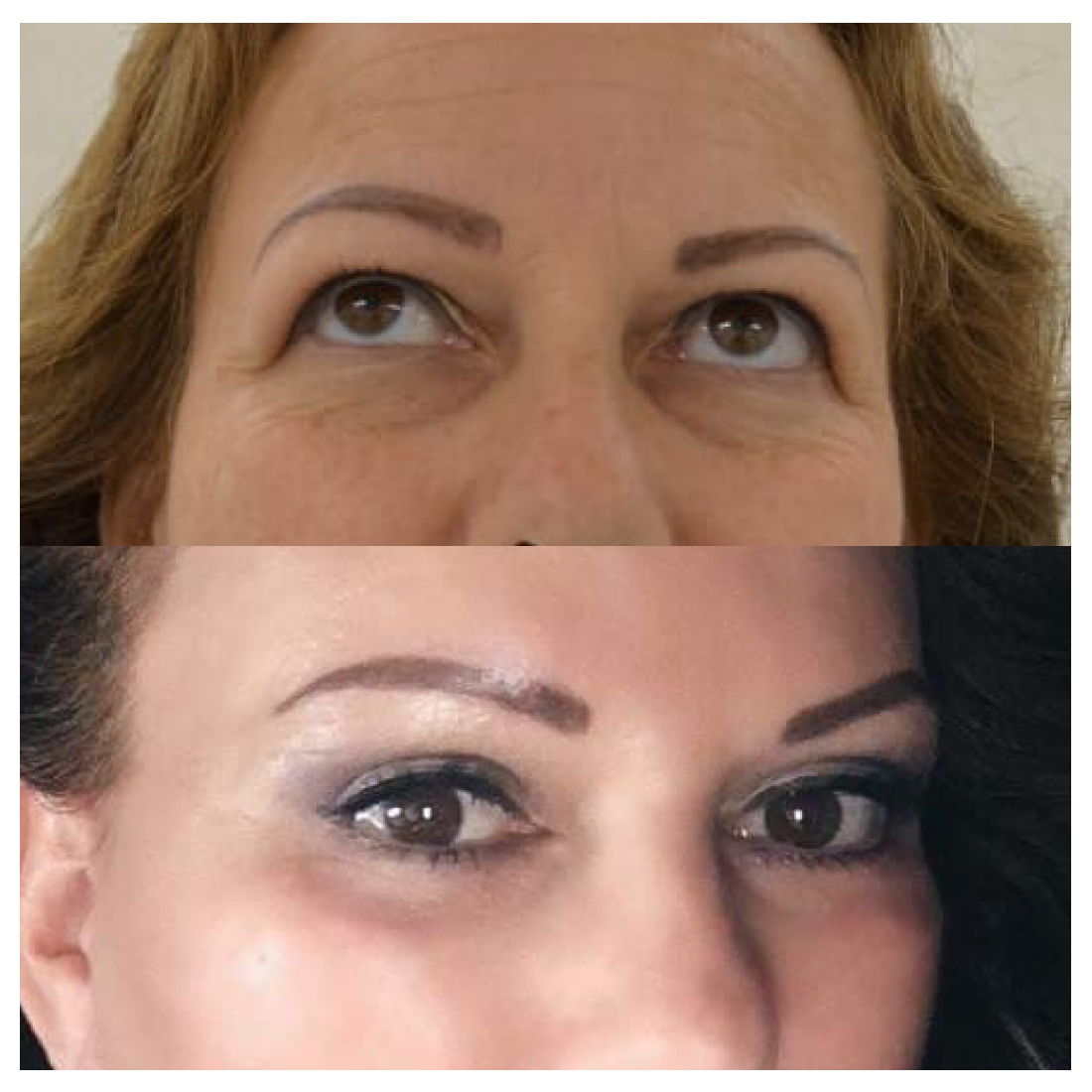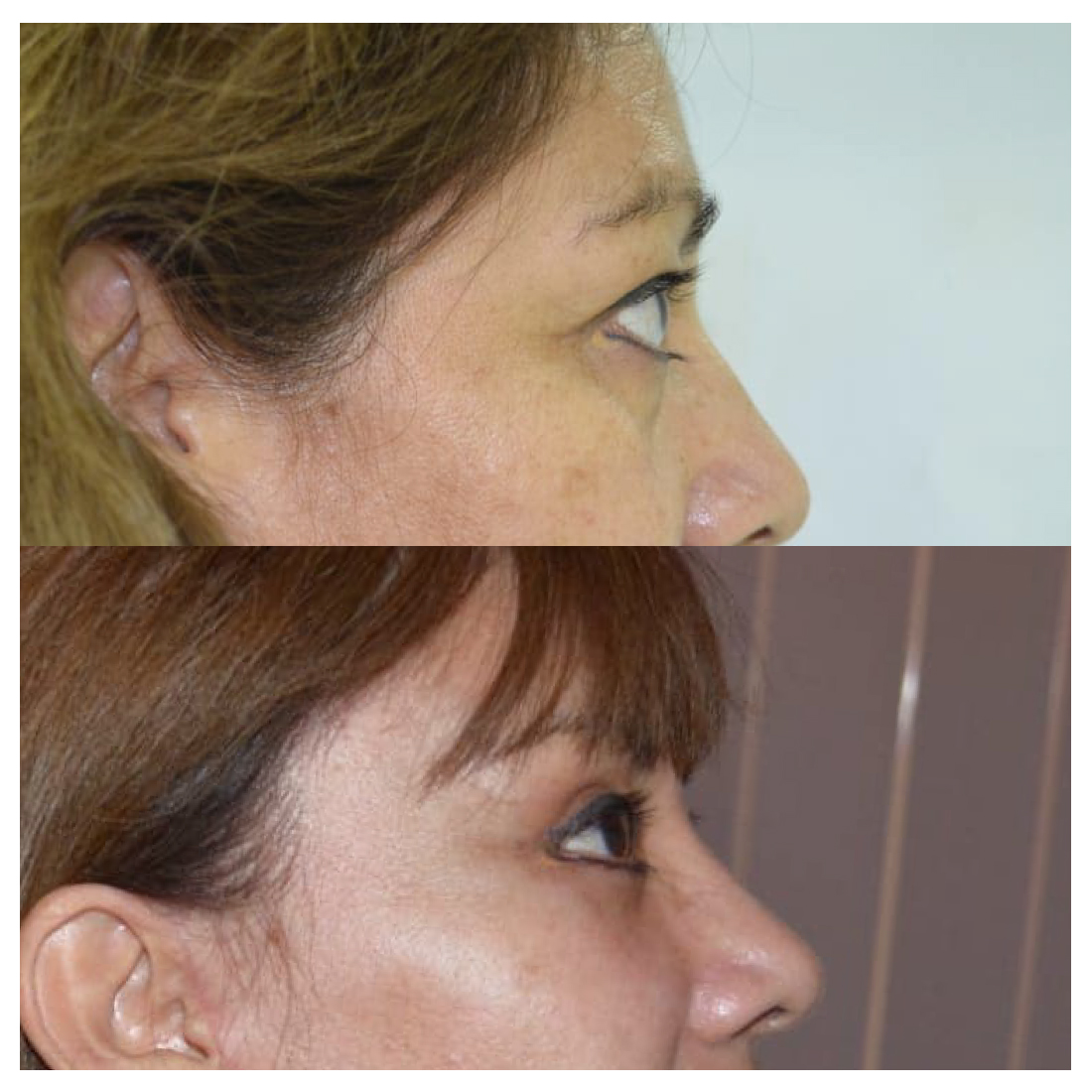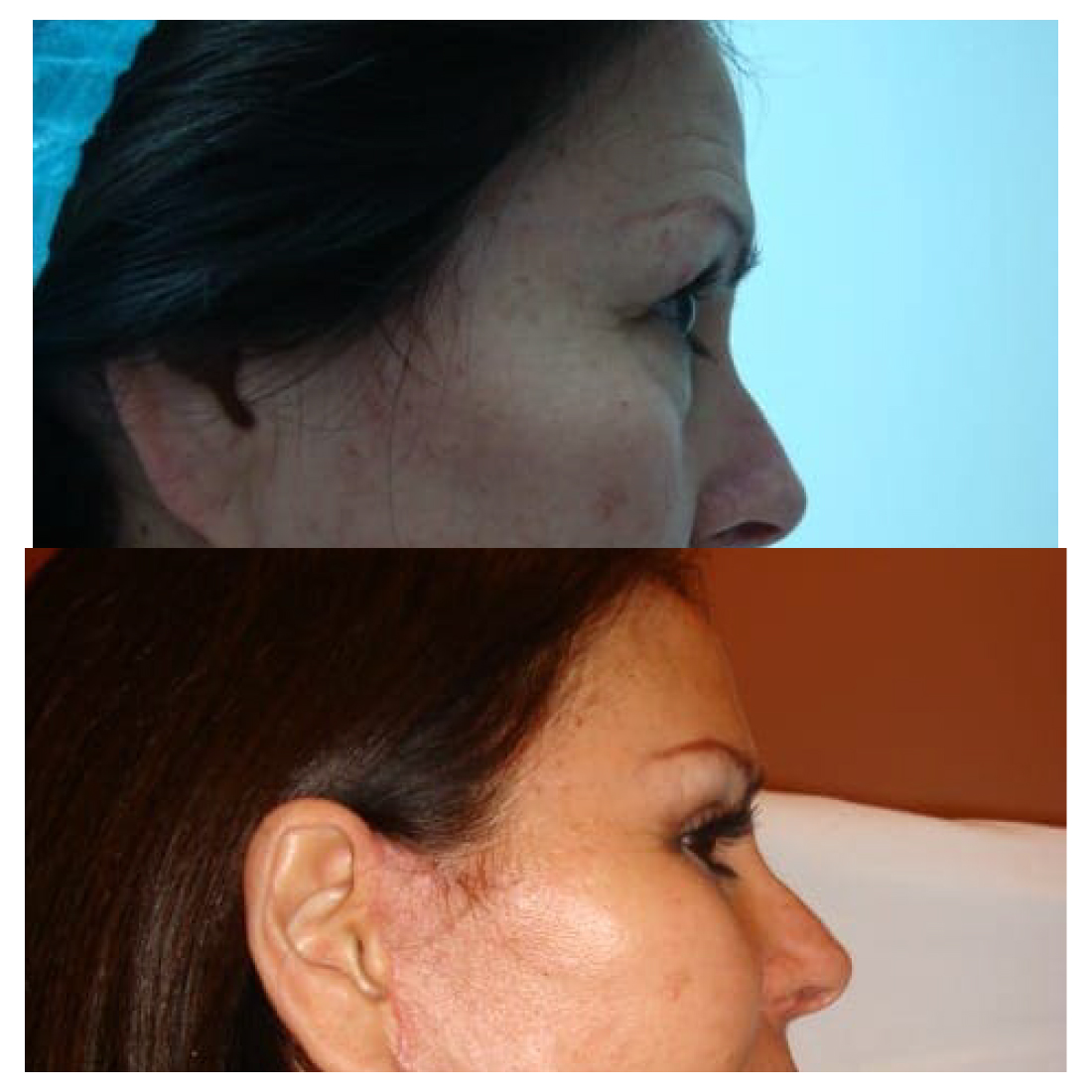
What is Blepharoplasty?
Cosmetic eyelid surgery dramatically improves the appearance of tired, droopy eyes. This is accomplished by removing excess skin and pockets of fat from the upper and lower eyelids. Many patients combine blepharoplasty with other treatments such as brow lift to eliminate drooping eyebrows, and various cosmetic dermal fillers to treat crow’s feet.
Blepharoplasty Candidates
Blepharoplasty is best suited for patients in good physical health who have realistic expectations about the outcome of the procedure. While most people who undergo eyelid surgery are older than 35, those who have inherited droopy eyelids sometimes undergo the procedure at an earlier age.
For many patients, eyelid plastic surgery can be a means of improving vision obstructed by drooping lids. Those who may not be well-suited for blepharoplasty include patients who suffer from insufficient tear production, high blood pressure, diabetes, circulatory disorders, cardiovascular disease, or thyroid disease.
Upper and Lower Eyelid Surgery
Cosmetic eyelid surgery can be performed using traditional or laser surgery techniques on either the upper or lower lid, or on both lids.
The goal for upper eyelid surgery is usually to lift the lid by removing excess skin. During lower eyelid surgery, a combination of excess skin and fatty deposits are removed to eliminate the bag under the eye. The result of both procedures is a smoother, younger-looking appearance.
Eyelid Surgery (Blepharoplasty) Recovery
Eyelid surgery (blepharoplasty), like all surgery, involves a period of recovery following the procedure. Knowing what to expect after the surgery is sometimes as important as knowing what to expect during the surgery. In the content below you can read about what is involved in recovery from eyelid surgery.
Care after Eyelid Surgery
During blepharoplasty recovery, the eyelids typically feel tight; accompanying soreness may be treated with analgesics. For the first couple of days following the surgery, the incisions should be treated with ointment to keep them lubricated. Cold compresses can be placed on the eyes to reduce swelling as well. Eye drops will be necessary to help keep the eyes from drying out.
In the first week after the procedure, patients should avoid any activities that may dry up the eyes, including reading, watching television, wearing contacts, and using a computer. Swelling and bruising can be minimized by keeping the head elevated as much as possible during the first few days of recovery. The doctor will remove the stitches between two and seven days after the eyelid surgery procedure. Patients may feel well enough to resume normal activities around the tenth day of recovery.
For the first couple of weeks following the surgery, dark sunglasses are recommended to protect the eyes from irritation caused by the sun and wind. Patients may notice that their eyes tire easily for the first several weeks of the recovery period; frequent naps are recommended.
Throughout the first three to four weeks after the surgery, any activities that increase blood flow to the eyes should be avoided, including bending, lifting, sporting activities, and even crying. Patients will be informed by their physicians when any type of exercise regimen can be resumed.
How Long is the Recovery Period?
Recovery from eyelid surgery generally takes several weeks. Within two days to a week, the stitches will be removed.
In the first week, patients will want to make sure that their eyes receive plenty of rest. The redness and swelling occurring after the blepharoplasty procedure will fade with time.
Recovery will also include ensuring that any exertion that may increase blood flow to the eyes is avoided. Patients may be able to return to work approximately 10 days after the surgery.
For some, the recovery process can seem long and they may become depressed, especially in the early stages of recovery when their faces appear swollen and bruised. But after a few weeks most patients begin to notice a welcome change in their appearance. The results of eyelid surgery – eyes that look younger and more alert remind patients why they chose to undergo the procedure in the first place.
Gallery
Click for detail.

